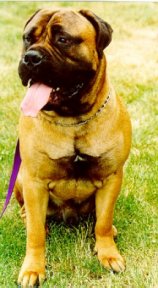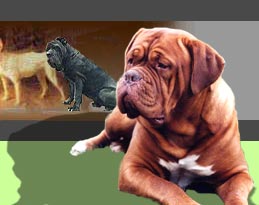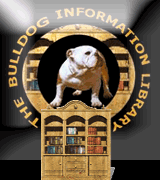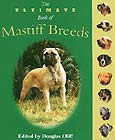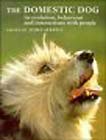
Every domesticated animal species shows tremendous variety in size, color, and conformation as a result of man's intervention in the breeding process. However, no species demonstrates more variety than man's best friend, the domestic dog. Canis familiaris comes in every imaginable size and shape, with every possible color and coat variation. Where did these varieties come from? Throughout the ages, an amazing number of people have pondered that question and theorized answers. Most of these people began by first cataloging the different kinds of dogs. Among the most well-known of these "catalogers" was Dr. Caius, who was the personal physician to Queen Elizabeth and who undertook the classification of British Dogs in 1576. Robert Leighton, another Englishman, records early classifications in his New Book of the Dog. Among them is one which was drawn up by the Romans and which classified dogs into canes villatica (watchdogs), canes pastorales (sheepdogs), canes vanatici (hunting dogs). These hunting dogs were further sub-divided into pugnaces (attackers), nare sagaces (trackers), pedibus cleres (chasers).
The Origins of the Mastiff
Bulldoginformation 2003-2006 © All rights reserved.
This article copyright the original author of the article.
Original idea, design and development by Catherine Marien-de Luca.
No part of Bulldoginformation may be copied, distributed, printed, or reproduced on another website without the owner's written permission.
These early classifications were made primarily on the basis of the dog's function, its job. Today a widely accepted classification of dogs divides them into four main categories each representing a different origin and sharing certain physical traits. Those categories, according to Richard and Alice Fiennes, are the Dingo group, the Northern group, the Greyhound group, the Mastiff group.
by Tamara Taylor
All Rights reserved, 1997.
Reproduced with the kind permission of the author, Tamara Taylor.
It is in the last of these, the Mastiff group, that most of the most massive dogs fall. The mastiff, or "canis maximus" as his fans call him, takes his generic name "mastiff" from the same base as "massive", meaning "mountain-like"; however, the English word "mastiff" is dogge in German and dogue or dogo in some romance languages.
The word mastiff brings to mind immediately the British breeds known today as the Bull-Mastiff and the Mastiff; likewise, the words dogo and dogue appear in the names of the French Dogue de Bordeaux and of the Argentine Dogo. However, this family spreads it branches much further, encompassing a large number of breeds, such as the hounds, setters, bulldogs, and modern mastiffs, all of which still share certain distinctive traits. Those shared characteristics can be traced back to the earliest mastiff type dogs, the root stock of this family.
Whether the prehistoric ancestors of the "massive" breeds today were Asian or Middle Eastern really matters little. In about 485 BC, Hubbard tells us, mastiffs were brought by Xerxes from Persia into Greece. At this time, all of modern day Turkey was part of the Persian Empire. These dogs may have had their origins in ancient Assyria or even in the area that would later become Turkey. Or their ancestors may have made the circuitous journey from the mountains of Central Asia, through India into Asia Minor, the gateway to Europe.
Whatever their prehistoric origins, these early mastiffs are thought to have first served as guard dogs for the flocks and herds of their owners. At a time when large predators still roamed the mountains and plains of Central Asia and the Middle East, these fierce guardians were invaluable. The Assyrians depict the dogs in battle with lions. Ancient stories say that the massive Hyrcanian dog from India, which took its name from the ancient Hyrcanian peoples of northern India and Baluchistan, was itself the result of a mating between a tiger and a bitch. In the American Kennel Club's The Complete Dog Book, a story recounts the disappointment of Cyrus the Great, founder of the Persian Empire about 550 BC. Receiving a mastiff from the King of Albania, Cyrus immediately set about proving its "mettle" and attempted to fight it against another dog and then against a bull. The mastiff showed no interest in fighting. Cyrus had it killed and then notified the King as to the cowardice of his gift. Cyrus received a second mastiff; however, this dog was accompanied by the message that the dog would scorn such pitiful opponents as a Persian cur or a bull. Cyrus was told to find the dog a worthy opponent, such as a tiger or an elephant, and to know he would receive no more mastiffs. As the story goes, the mastiff was set upon an elephant which she did finally bring to its knees. continue
To find those roots we must go back to a time that antedates the writing of Dr. Caius or even that of ancient Romans, Varro and Columella. In fact, we must go back beyond these written records to the dog as recorded in ancient art. No culture was so proud of their animals as the Egyptians, who left us a virtual treasure trove of animal artwork. Interestingly enough, as Leighton points out, the ancient mastiff is noticeable for its absence in early Egyptian works. To find an early artistic rendition of the heavy boned, drop eared, short-muzzled mastiff, we must go to ancient Assyria. There numerous examples of the ancient mastiff are seen in stone bas-relief from sites like Nineveh (from about 640 BC). Today many of these carvings are housed in the British Museum.
Did the ancestral mastiff come from Assyria and Mesopotamia, which is so often referred to as the cradle of civilization? Paul Strang, a cynologist and a noted authority on the Great Pyrenees, observes in his book The Complete Great Pyrenees, that the existence of massive native breeds today in Turkey, Iran, and Southern Russia could support the theory that the ancestors of today's mastiff breeds came from the Middle East. Other serious cynologists, such as David and Judy Nelson, agree with that possibility. Experts on the Turkish native breeds, they have been involved in field observations and research in that area of the world for over twenty years. Their work in the eastern regions of Turkey (due north of ancient Nineveh, as the crow flies) has focused Western attention on the Kangal Dog, a native of the Sivas region of Turkey.
The Kangal Dog is a classic example of a "natural," working mastiff without the exaggerated body proportions seen in many of the more "modernized" breeds today. Nonetheless, the Kangal Dog is identifiable as a mastiff, powerfully built with pendant ears, relatively short, heavy neck and muzzle, a definite stop, and well-developed flews (lips) and dewlap. Used as both a livestock guardian and a military dog, this dog is itself an object of national pride, so much so that the Turkish government sponsors several breeding facilities and limits its export.
However, some cynologists, such as Strang, have proposed that the roots of this ancient family may trace even further East, to Asia, and to the area where ancestors of the modern Tibetan Mastiff were found. This theory maintains that as ancient nomadic peoples moved westward, they brought with them their flocks and their guard dogs. Leighton simply states that the "Thibet" (sic) Mastiff is "no doubt . . . depicted in the sculptures from the palace of Nimrod" but offers no further support as to why the relatively smooth-coated dogs depicted should be considered Tibetan Mastiffs. He does, however, cite a Chinese manuscript from 1121 BC which describes a dog sent from a western Chinese province to the Emperor Wou-wang. Leighton calls this dog "a great dog of the Thibetan kind . . .four feet high, and trained to attack men of a strange race."
.
.
.
The Complete Dog Book, 19th Editionby American Kennel Club Staff
More information
The Domestic Dog :
Its Evolution, Behaviour and Interactions with People
by James Serpell
A scientific approach to the natural history of the dog: its evolution, behavior, and interactions with humans and its place in our society. Three major areas: domestication & evolution, behaviour & behavioural problems, human-dog interactions.
more information:
The Ultimate Book of Mastiff Breeds
by Douglas Oliff (Editor) Surveys the history of the different types of mastiffs, sharing a common lineage from the ancient Mastiff type. With the standards of the breeds, training, nutrition, working dogs, dog shows, and health care.
more information
The Naural History of Dogs
Richard and Alice Fiennes
A complete natural history of the dog: the different races of dogs; their origins and dispersal, the roles and uses of dogs in ancient, classical and modern times.
More information
The history and Management of the Mastiff
Elizabeth J. Baxter
updated 2nd edition
Covers the origin, challenges faced and survival of this noble breed. You are transported to long ago times, kennels and people in the United Kingdom and United States who helped shape the breed.
The authors have been deeply involved with Mastiffs since the early 1960s and were personally acquainted with many of the major Mastiff breeders and fanciers of the past.
Complete with 84 rare photos and 12 instructive pedigrees.
More information
Mastiff: A Comprehensive Guide
to Owning and Caring
for Your Dog
(Kennel Club Dog Breed Series)by Christina De-Lima-Netto
More information
Mastiffs: Everthing About Purchase, Care, Nutrition, Grooming, Behavior, and Training
(Complete Pet Owner's Manual)by Kim Campbell Thornton
More information


